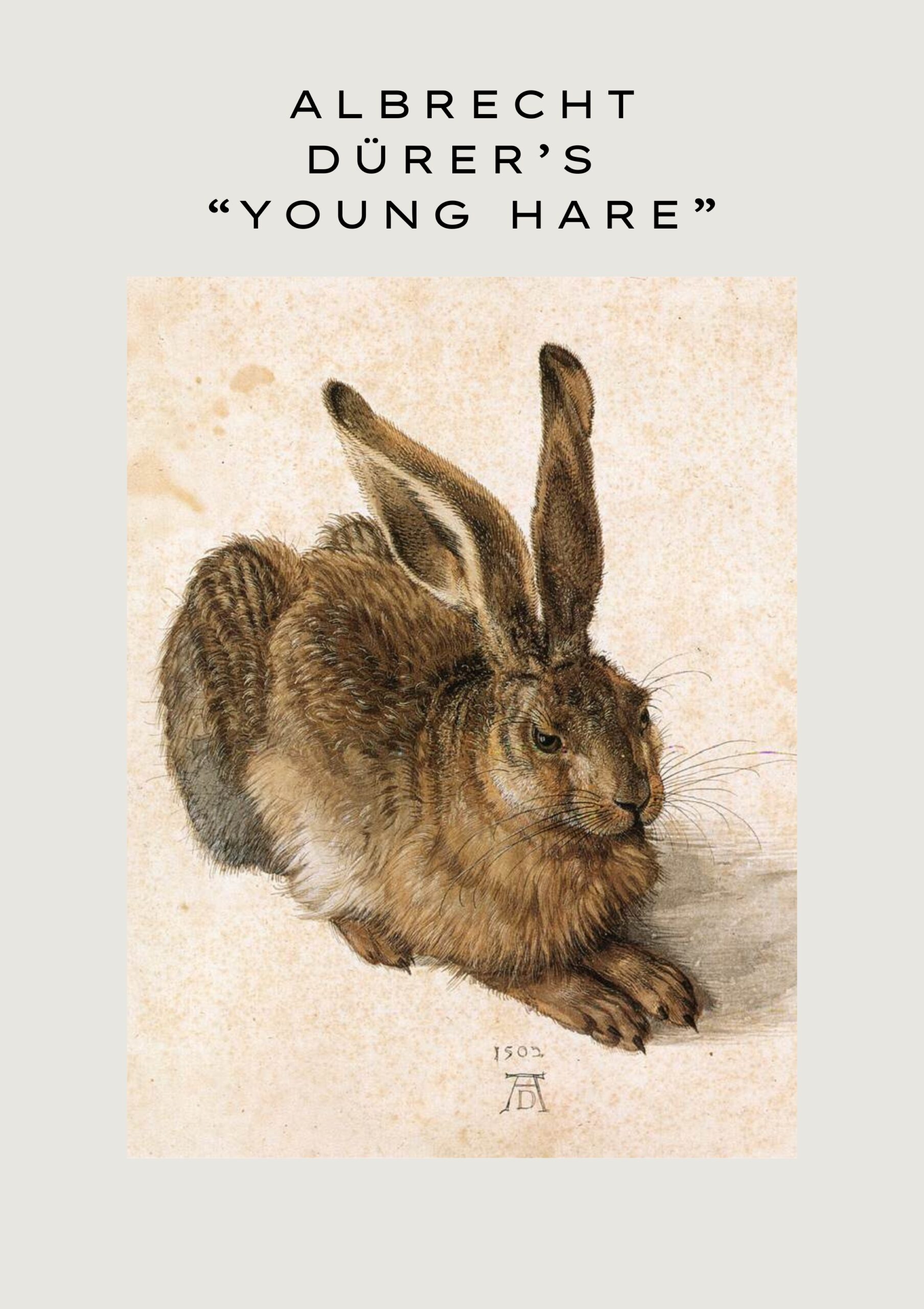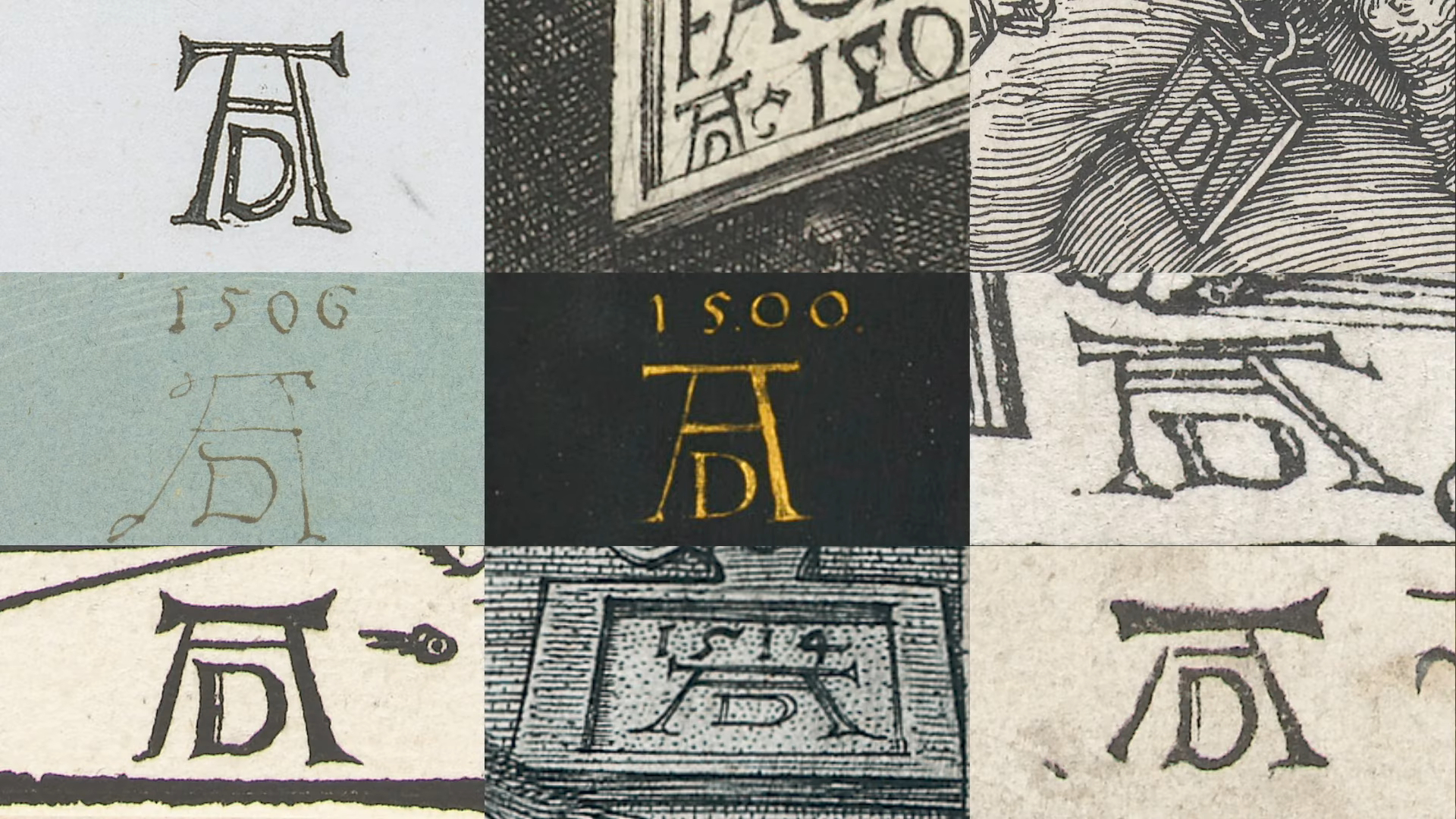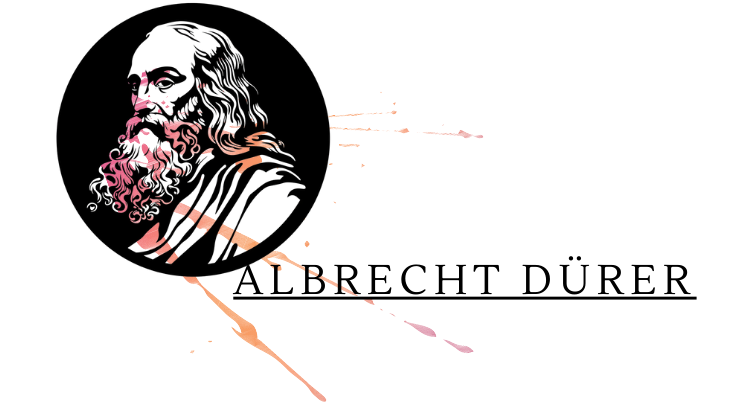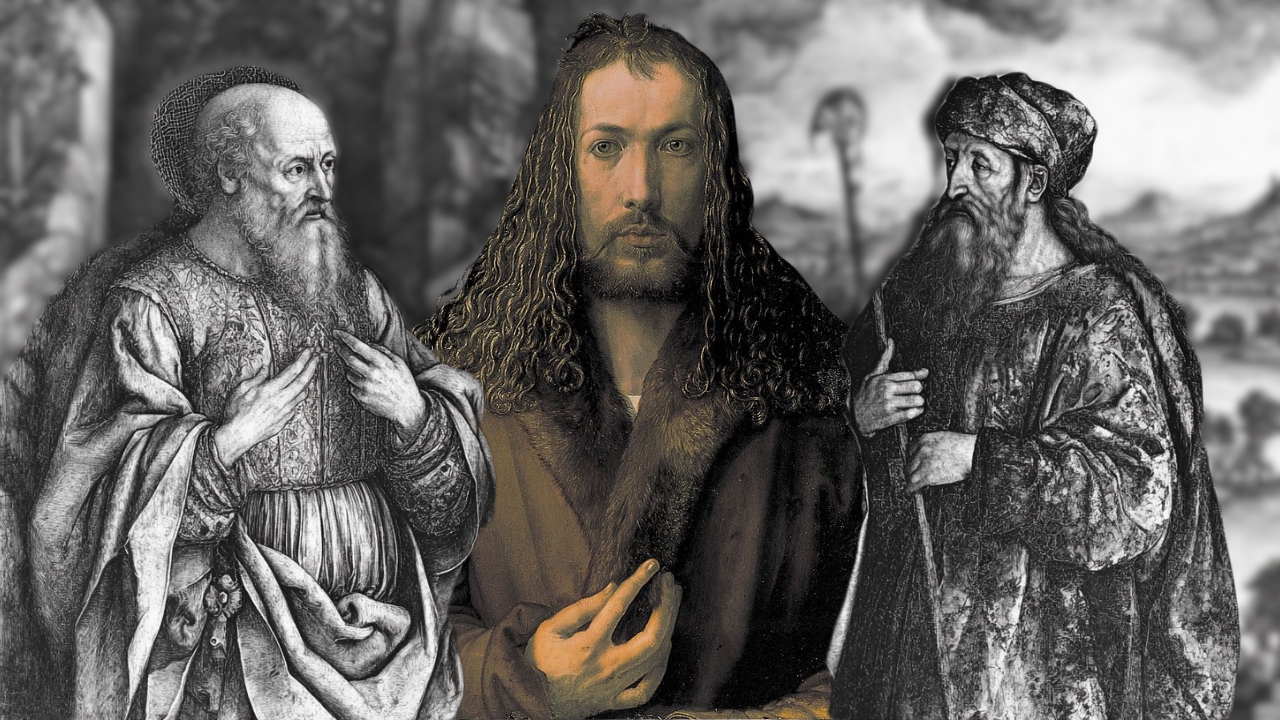One of Albrecht Dürer’s most cherished works, the study of a wild hare, has captured the admiration of art lovers and casual viewers alike.
For many, it stands as an introduction to Dürer’s work, gracing everything from encyclopedias to greeting cards.
The image’s simplicity belies its profound artistry, and it invites us to reexamine Dürer’s approach to capturing a subject with such masterful technique.
Let us talk about this work of art in greater detail.

The Artist’s Early Years and Evolution
- Growth
- Exploration
- Artistic development
His years spent traveling and learning his craft under various mentors laid the groundwork for a style that would later become unmistakably his.
Pinpointing specific pieces as his early work remains challenging, leading to debates about which pieces reflect the youthful Dürer and which showcase the artist he would become.
Period of Uncertainty and Debate
Art historians often discuss Dürer’s early works, which he created during his travels and apprenticeship.
These unsigned or ambiguously attributed pieces prompt scholars to analyze stylistic traits to identify those genuinely belonging to Dürer.
The formative period remains enigmatic as experts search for traces of Dürer’s developing style within works that might or might not be his.
In the late 15th century, illustrated books and woodcut prints gained popularity.
However, publishers typically credited authors of the texts rather than the artists who illustrated them, leaving many of Dürer’s early contributions unrecognized.
The Rise of Illustrated Books
As illustrated books became more widespread, the artistic contributions of illustrators like Dürer were often overshadowed by the authors of the texts.
The lack of recognition adds to the challenge of identifying his early work and understanding the evolution of his style.
Despite these limitations, Dürer’s developing skill in intricate details and complex compositions started to emerge, signaling the distinctive style that would define his later pieces.
In time, Dürer’s skill flourished, combining precision with expressive detail. His later works exhibit his signature style, one that combines technical mastery with a keen observational eye.
Pieces such as his “Apocalypse” series capture scenes with striking intensity, using sharp lines and dramatic compositions to convey a powerful sense of movement and urgency.
The Mature Dürer Style
Dürer’s later work, marked by superb detail and skill, features compositions of exceptional clarity and complexity.
In his “Apocalypse” series, for example, he brings to life vivid, chaotic scenes that almost burst from their frames, illustrating his ability to evoke powerful emotions through careful linework and dynamic structure.
The “Young Hare,” completed approximately five years after the “Apocalypse” series, showcases this same skill but in an entirely different light.
Here, Dürer focuses on a single subject with such attention that he captures both its stillness and its latent energy.
The hare is presented in a moment of calm, yet its posture and the detail of its fur and eyes suggest it is ready to move at any instant.
We can also see his artistic brilliance with a simple, yet highly effective “Praying Hands.”
Parallels with Leonardo da Vinci’s Natural Studies
Even before encountering Leonardo da Vinci’s work, Dürer’s approach to the natural world paralleled that of the Italian master.
Both artists produced an array of studies, from anatomical sketches to botanical illustrations, demonstrating a shared commitment to detailed observation.
Although it’s uncertain how Dürer completed his study of the hare, whether from a live animal, impressions from memory, or a specimen, the piece, titled “The Field-Hare,” remains a masterclass in capturing lifelike details.
Dürer meticulously rendered every nuance, from the variations in the hare’s fur to the keen liveliness of its ears and eye, lending the animal a naturalistic presence.
Realism and Scientific Precision
Albrecht Dürer’s approach to realism has drawn admiration and comparisons across centuries.
British art critics have frequently likened Dürer to later artists like George Stubbs and Sir Edwin Landseer, both celebrated for their dedication to realism and their sensitivity to animal subjects.
Yet, while Stubbs and Landseer are known for their emotive renderings, Dürer’s “Young Hare” embodies an almost scientific accuracy, setting it apart.
His technique goes beyond aesthetic appreciation, bordering on a forensic examination of his subjects.
Comparisons to Stubbs and Landseer
- Stubbs, famous for his lifelike horse portraits
- Landseer, known for his renderings of dogs and other animals
However, Dürer’s attention to fine detail, down to individual strands of fur and the light reflecting in the hare’s eye, shows a precision that goes beyond artistic interpretation.
His hare seems almost anatomically accurate, inviting viewers to see it not only as a beautiful creature but as a study of life itself.
Dürer’s decision to add his monogram to “Young Hare” signifies the importance he placed on this work.
While many studies of the time were considered preparatory pieces for larger projects, Dürer’s signature suggests he viewed this as a complete work, one with intrinsic value.
The monogram marks “Young Hare” as a standalone masterpiece, respected by the artist himself as a work of both artistic and scientific significance.
The Significance of Dürer’s Monogram

By adding his monogram to “Young Hare,” Dürer indicated that he saw it as more than a practice study.
His monogram, a symbol of pride and ownership, shows that he considered the piece complete and worthy of display on its own merits.
It is unusual for works of its kind, especially in an age when studies of animals were often preparatory or secondary. For Dürer, however, the hare represents a perfected form, capturing the creature’s essence in a moment that needed no further embellishment.
Another piece, “The Great Piece of Turf,” highlights Dürer’s commitment to scientific accuracy, even in seemingly simple compositions.
A botanical study showcases a dense patch of grass and wild plants, rendered so realistically that botanists identified at least four distinct plant species within the image.
Dürer’s commitment to detail in this work, as with “Young Hare,” underscores his pursuit of authenticity and his respect for the natural world.
Breaking Free from Symbolism
Religious symbolism steeped Dürer’s era, influencing everything from folk art to official ceremonies. Few artists of the time would depict animals without layering their work with allegorical meaning.
In this sense, Dürer’s “Young Hare” stands apart as a straightforward portrayal, free from overt symbolism, which may explain part of its enduring appeal.
The hare, in Dürer’s hands, is simply itself, beautiful, alert, and alive. The same thing is found in many of his paintings.
Summary
Albrecht Dürer’s Young Hare stands as a testament to his mastery of realism and his dedication to capturing nature in its purest form.
The hare’s lifelike stillness, paired with Dürer’s meticulous attention to detail, brings the viewer face-to-face with a moment frozen in time, one where art and science seamlessly converge.

